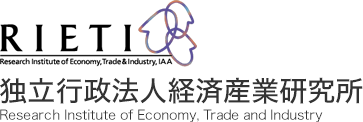| 執筆者 | 福川 信也(東北大学) |
|---|---|
| 発行日/NO. | 2025年7月 25-E-064 |
| 研究プロジェクト | 国際的に見た日本産業のイノベーション能力の検証(Part 2) |
| ダウンロード/関連リンク |
概要
公設試験研究機関(公設試)による技術普及サービス(分析試験、設備利用、技術相談、教育訓練など)の生産性への効果を内生的スイッチング回帰(ESR)モデルにより検証し、結果をパンデミック前後で比較した。中小企業経営者・自営業者へのオンライン質問紙調査から得られた2016年から2023年のパネルデータに基づき以下の分析を行った。第一に、技術普及サービスの平均処置効果に関して、パンデミック前後を通じてプラスの効果が観察された。したがって、潜在的ユーザ企業の間で公設試の認知度を向上させることは中小企業生産性改善にプラスの含意を持つ。第二に、生産性効果は無形資産への投資(研究開発、教育訓練、デジタル化)を行う企業で大きい。特にパンデミック期(2020年から2023年)においてこの補完性が強まったことから、吸収能力が中小企業のレジリエンスに寄与することが確認された。第三に、選択バイアスに関して、生産性の高い企業が公設試を利用する傾向にある一方で、同等の能力を持ちながら利用を選択しなかった企業も存在し、比較優位に基づく自己選択が示された。第四に、地理的距離は公設試へのアクセスを制約していたが、パンデミック期にはデジタル化によりその制約が低下した。
概要(英語)
This study investigates the impact of Technology Extension Services (TES) on the productivity of small and medium-sized enterprises (SMEs) in Japan, using an Endogenous Switching Regression model and firm-level panel data covering both the pre-pandemic (2016–2019) and pandemic (2020–2023) periods. Focusing on Kohsetsushi, Japan’s extensive network of public support institutes for SMEs, the analysis finds that TES adoption significantly improves firm productivity across both periods, highlighting its role as a locally embedded innovation intermediary. Firms with higher levels of intangible capital benefited more, with complementary effects particularly pronounced during the pandemic—suggesting that absorptive capacity became critical under crisis conditions. Selection estimates reveal that more productive firms were more likely to adopt TES, although some equally capable firms opted out—consistent with comparative advantage shaping self-selection patterns. Geographic proximity to service providers constrained TES access in stable periods but became less critical during the pandemic due to the expansion of digital service delivery. These findings underscore how firm capabilities, external shocks, and spatial access jointly influence the effectiveness of public technology support programs.

